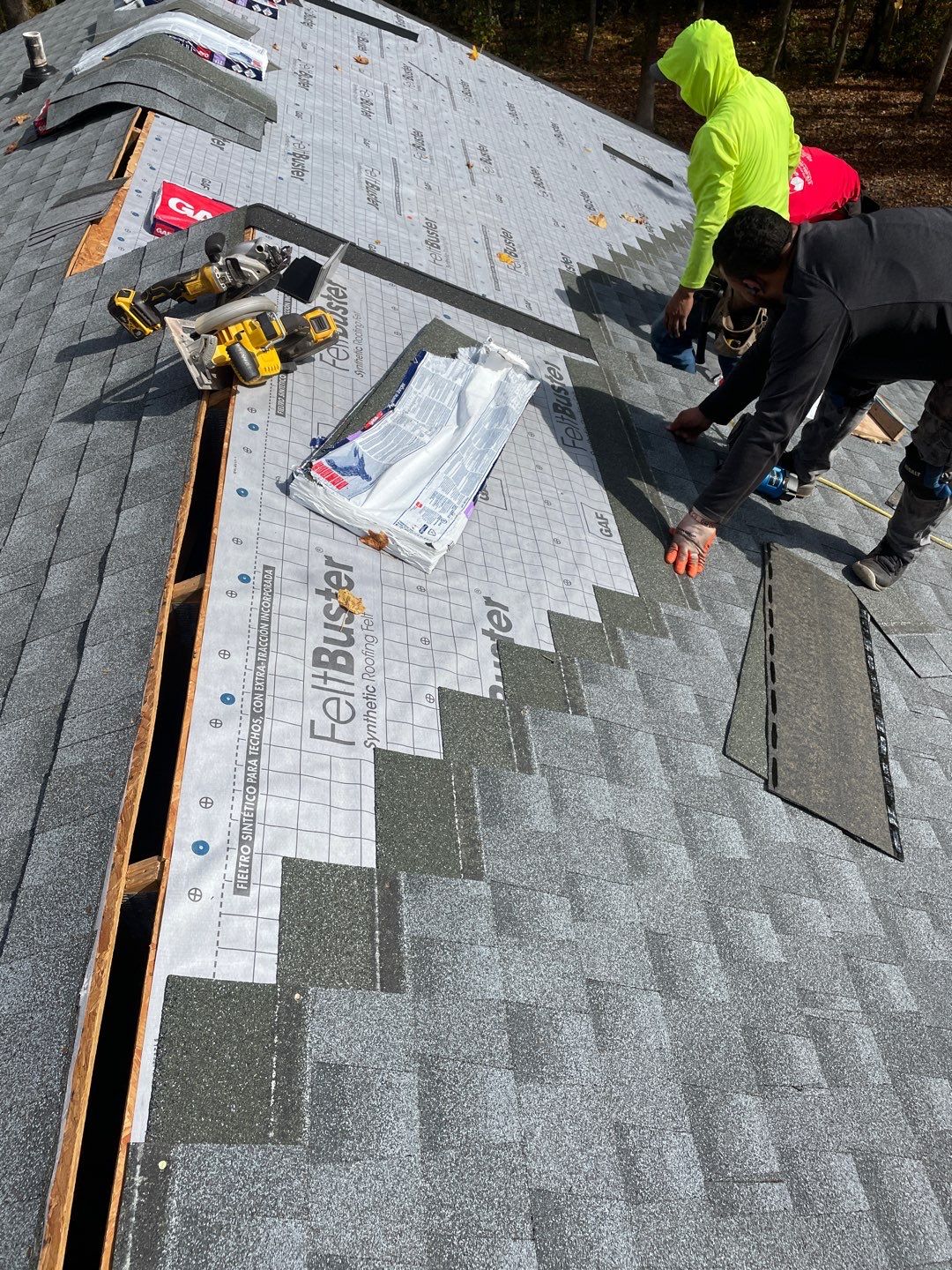The Benefits of Dealing With Gainesville FL Roofing Companies
The Benefits of Dealing With Gainesville FL Roofing Companies
Blog Article
Ideal Practices for Ensuring Appropriate Roofing Air Flow
A balanced consumption and exhaust vent ratio, commonly 1:300, plays a crucial duty, with intake vents ideally put at the lower edge of the roof covering for trendy air entry and exhaust vents at the optimal for cozy air leave. Keeping insulation away from vents is vital to protect against airflow limitation.
Understand Ventilation Basics
Correctly recognizing ventilation essentials is essential for ensuring the durability and efficiency of roof covering systems. Efficient air flow reduces wetness accumulation and temperature extremes in the attic room, both of which can lead to significant architectural damage gradually. A well-ventilated roof covering assists in protecting against common issues such as mold and mildew development, wood rot, and ice dams, which can endanger the integrity of the roof products and the underlying frameworks.
The key goal of ventilation is to facilitate the activity of air, enabling a regular exchange between the interior and outside atmospheres. This equilibrium is achieved with a mix of intake and exhaust vents that interact to keep optimal air flow. Intake vents, commonly situated along the eaves or soffits, allow fresh air to enter the attic area, while exhaust vents, usually positioned at or near the roofing ridge, enable hot, moist air to leave.
Secret factors influencing the efficiency of roofing system ventilation include proper positioning, sufficient sizing, and making certain that both consumption and exhaust vents are unobstructed. Normal assessment and maintenance are critical to identify possible obstructions, damages, or ineffectiveness in the air flow system, consequently securing the roof covering's performance and resilience.
Sorts Of Roof Covering Vents
Roof vents play a critical role in keeping effective attic ventilation and, by extension, the total health and wellness of the roof system. Numerous types of roofing system vents are available, each with one-of-a-kind advantages tailored to specific roofing needs.

Soffit vents are installed under the eaves and job in tandem with roofing vents to make sure a well balanced intake and exhaust system. By permitting cooler air to go into from below, soffit vents assist in the expulsion of warm air through upper vents. Gable vents, situated on the outside wall surfaces of the attic, deal one more reliable remedy, particularly in homes with saddleback roofs.
Examine Your Existing Ventilation

Following, take into consideration the age and condition of your roofing materials and air flow parts. Older systems may not adhere to existing building ordinance or may have weakened with time, minimizing their effectiveness. Conduct a detailed examination to determine any kind of indicators of deterioration, such check it out as corrosion, damages, or gaps that could compromise the system's efficiency.
In addition, measure the attic temperature level and humidity levels. High temperature levels and humidity can indicate inadequate ventilation.
Setup Best Practices
Efficient installation of roof covering air flow systems is vital for making certain optimal efficiency and durability. Correct setup starts with comprehending the particular ventilation requirements of the building and the roof it covers. This includes determining the appropriate proportion of intake to wear down vents, usually adhering to the 1:300 regulation, which specifies one square foot of ventilation for every 300 square feet of attic flooring space.

Consumption vents need to be mounted at the roofing's lower edge, usually in the soffits, to allow trendy air to get in. Exhaust vents, on the other hand, must be set up near or at the roof's peak to promote the leave of cozy, moist air.
Seal all air vent connections thoroughly to prevent air leaks and potential water seepage. Use high-grade materials and follow supplier guidelines to guarantee resilience and efficiency. In addition, integrating ridge vents with baffles can dramatically enhance air movement efficiency by avoiding wind-driven rain and snow from getting in the attic.
Inevitably, exact setup of roof ventilation systems mitigates potential issues such as mold growth, ice dams, and structural damages, making certain the roofing's stability and the building's total health and wellness.
Regular Upkeep Tips
Uniformity in upkeep techniques is fundamental to making certain the long-term performance of roofing ventilation systems. Throughout these evaluations, make certain that vents are complimentary of particles, nests, and various other blockages that might hamper airflow.
Cleansing the vents is an additional important task. Utilize a soft brush or a vacuum to eliminate dirt and debris from consumption and exhaust vents. Be careful not to harm the vent displays or louvers during the process. In addition, evaluate the attic room for any kind of signs of water damages, which might compromise the integrity of the roof covering system.
Correct insulation is just as important. Make certain that attic insulation does not obstruct the vents, as this can severely restrict airflow. Reposition or replace it to maintain an effective obstacle. if any kind of insulation has moved or settled.
Lastly, change any type of harmed or missing out on components without delay. Damaged vents, fractured tiles, or worn-out flashing can all add to poor air flow and should be attended to right away. Regular upkeep ensures that the roof ventilation system helpful site operates efficiently, thus prolonging the life-span of the roofing system itself.
Verdict
Making certain proper roofing ventilation is critical for keeping the performance and durability of a roofing system. Adherence to the 1:300 consumption and exhaust vent proportion, weblink coupled with the critical placement of vents, is crucial.
A well balanced intake and exhaust vent proportion, generally 1:300, plays a crucial duty, with consumption vents preferably positioned at the reduced side of the roofing for amazing air entry and exhaust vents at the height for cozy air exit. Consumption vents, normally located along the eaves or soffits, allow fresh air to enter the attic room room, while exhaust vents, usually situated at or near the roofing ridge, allow warm, moist air to leave.
Soffit vents are set up under the eaves and job in tandem with roof covering vents to guarantee a well balanced consumption and exhaust system. By permitting cooler air to get in from below, soffit vents assist in the expulsion of warm air via top vents. Adherence to the 1:300 consumption and exhaust vent proportion, paired with the calculated positioning of vents, is necessary.
Report this page